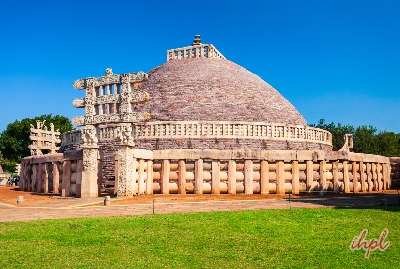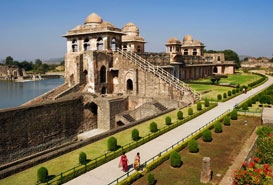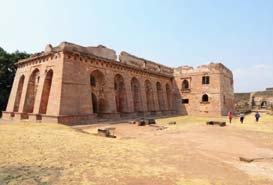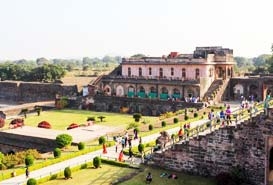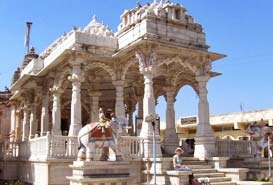Amongst the many monuments and palaces that adorn the historical city of Mandu famous for the legendary tragic love story of Prince Baz Bahadur and Roopmati is the Roopmati’s Pavilion, one of the most visited tourist attractions in Mandu. Perched atop a hillock on the southern side of the Baz Bahadur Palace, Rani Roopmati Pavillion is from where the queen would view the palace of her beloved, Baz Bahadur
Originally built as an army observation post, the structure later on took the shape of symbol of undying love between Baz Bahadur and Rani Roopmati. Lying to the south of Baz Bahadur’s Palace, Roopmati’s Pavilion was then a low and large hall with two rooms on each side and a thick sloping base. Later, the building was extended on the western side along the plinth and the most interesting additions were the square pavilions housing hemispherical domes.
The corridors in the basement of the Roopmati’s Pavillion have a number of arched openings across their width. The western ledge contains a large reservoir in which rain water was collected during the monsoon through a channel running from the roof of the structure to the tank below. Also the sensational view of river Narmada flowing 305 meters below is a sight to behold.
Rani Roopmati’s Pavilion bears witness to the love story between Queen Roopmati and Baz Bahadur. It was on one of his hunting excursions that Baz Bahadur got attracted to the mellifluous tunes of Roopmati, then a simple Hindu peasant girl. Love blossomed among them and she was brought to Mandu by the sultan on the condition that she would stay in such a place as to be able to view her paramour’s palace as well as the flowing Narmada. Thus began the love story between the two, though it ended tragically due to the intrusion of Adham Khan, a general of Mughal Emperor Akbar, who was attracted by the beauty of Roopmati. However, the queen died a self inflicted slow poisoned death, unable to bear such mental trauma.






